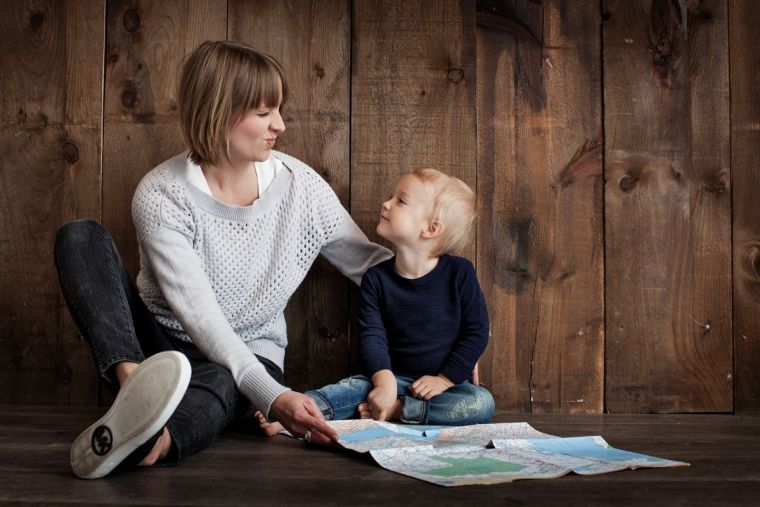'I spy .... a Cross'? Easter games you can teach children to help them understand

Many kids believe the Easter story because it's simply how their parents have raised them, but they might not grasp the meaning behind the Passion. Other kids may only know the secular side of Easter—hiding Easter eggs, eating chocolate bunnies, and wearing new, gleaming clothes. So how do you help kids who know the true story (and those who don't) to really understand in their hearts that Jesus is the reason for this season, too?
Start with the Cross. Play a game that kids love: 'I Spy'. Look around for crosses. Kids can spy them on necklaces, hospitals, churches, and cemeteries. Explain that crosses are on places that bring healing and comfort to the living and hope for the dead. But would people ever wear something like a hangman's noose around their necks? Would a hospital use some torture device as their beacon (although kids may think getting shots qualifies)? Of course not! Ask them what they think happened on that cross that transformed it from 'an emblem of suffering and shame' to a happy symbol of comfort. Explain that Jesus happened on that cross. It was an act of love and the love of Jesus transforms everything it touches.
Play another game kids love, 'Connect the Dots', with Prophecy. Many times kids think that Easter happened because some bad people were mean to Jesus. As Oswald Chambers stated, 'the Cross wasn't something that happened to Jesus' – it was all planned. It was a set-up. In the beginning, we humans messed up and God immediately set His rescue in motion. God not only mapped out the place, method and date but even the exact time—down to the hour—that Jesus would freely give His life for ours. Adam and Eve had barely swallowed the fruit in the Garden of Eden when God Himself wrote the first Easter prophecy (see Genesis 3:15). Everything about Easter was prophesied centuries before it happened! Help kids to connect the dots of Messiah's long foretold Passion (This is a great list to use). Explain how Jesus wanted us to know beyond a shadow of a doubt that He was in control of everything at Easter.
Next, read the Easter story from a children's Bible. Use pictures to help your kids understand what Jesus endured so they grasp the love and grace of the cross without terrifying them. Do this in a way your child can grasp, depending on their age or development.
To go deeper with older children, talking animals help explain every detail of Easter, from the writing of the prophecies all the way to the Resurrection. My Epic Order of the Seven books employ an animal team (a Scottish terrier, two cats from France and Ireland, a West Highland terrier, a British mouse, a Swiss mountain goat, and a lamb from Judea) to work behind the scenes in the birth, life and death of Jesus and the painful purpose of his coming: the Passion. (See The Prophet, the Shepherd, and the Star, and The Roman, the Twelve, and the King.)
So what about Easter egg hunts and chocolate bunnies? They tie in beautifully! Jesus was 'hidden' for three days, from Friday until Sunday, Easter morning. While He was in the tomb, the disciples and the world didn't see Him; but their hearts also didn't see what He had told them all along— that He would die and rise three days later. On Easter, Jesus came out of 'hiding' from the tomb and each person He appeared to believed that He was risen indeed. Finding hidden eggs can remind kids of Jesus' appearances to those who 'found Him' on Easter morning.
Chocolate bunnies are either solid or hollow. The real Easter story of Jesus is like a solid chocolate bunny. It doesn't fall apart when you bite into it. The secular story of the Easter bunny is fun, but it's hollow and falls to pieces when you take a bite. And the new Easter clothes? Guess who also wore new, gleaming clothes that first Easter morning?
Award-winning author and speaker Jenny L. Cote, who developed an early passion for God, history, and young people, blends these three passions in her two fantasy fiction series, 'The Amazing Tales of Max and Liz' and 'Epic Order of the Seven'. Likened to C. S. Lewis by readers and book reviewers alike, her love for research has taken her to London (with unprecedented access to Handel House Museum to write in Handel's composing room), Oxford (to stay in the home of C. S. Lewis, 'the Kilns', and interview Lewis' secretary, Walter Hooper at the Inklings' famed The Eagle and Child Pub.











